With Senate confirmation hearings for Supreme Court Justice nominee Ketanji Brown Jackson set to start in a matter of days, it’s clear she could become one of the most important women ever in U.S. political history. As the first Black female ever nominated for the Supreme Court, as well as the first-ever public defender to potentially have a seat on the nation’s highest court, the impact her appointment could wield is immeasurable.
Because of the headline-making nature of her role, should Jackson be confirmed for the Supreme Court, many believe she could rise to become one of the most influential and powerful women in the nation’s capital, a rarified group that includes iconic D.C. leaders like current Speaker of the House Nancy Pelosi, Vice President Kamala Harris, former Secretary of state and presidential hopeful Hillary Clinton, New York state representative Alexandria Ocasio-Cortez and the late Justice Ruth Bader Ginsburg.
That is good company to keep and something worth celebrating — as well as reflecting on further — for all of us who aspire to a more diverse and inclusive world. While news stories about the awards and achievements of those names are plentiful, they sadly aren’t the norm.
Like the business world, representation, diversity and inclusion for women in politics has increased significantly over the past two decades. But it also still has a long way to go until we reach full parity of the sexes. And for every Harris, AOC or Jackson we champion, it’s essential to remember that none of these women would be where they are at today if it wasn’t for the efforts and energies of the trailblazing female pioneers before them who helped to create a place for women in American politics and who fought tirelessly to have their voices heard.
As we continue to celebrate Women’s History Month and prepare for the historic potential appointment of Judge Ketanji Brown Jackson to the U.S. Supreme Court, let’s look back on six of those groundbreaking women who came before, who are some of the most important and influential women ever in U.S. political history. The lasting legacies of these women are still helping to shape the world of politics and political service today.
1924 – 2005
In 1968, educator and author Shirley Chisholm became the first Black woman elected to the United States Congress, representing New York’s 12th congressional district. Chisholm maintained that position for seven terms.
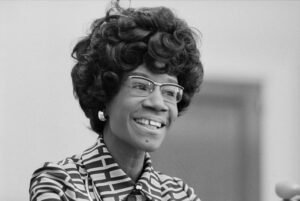
In 1972, she also made history as the first Black candidate ever to seek a major-party nomination for President of the United States. She was also the first woman to ever run for the Democratic Party’s nomination.
The daughter of Barbadian immigrants, Chisholm began her career as a nursery school teacher, eventually working her way into politics as an outspoken advocate for education and social programs. During her time in Congress, Chisholm helped found the Congressional Black Caucus, fought for daycare funding, increased minimum wages for domestic workers, and created a highly influential intern program designed to help other aspiring future politicians get their start.
In her own words: “I ran because somebody had to do it first!”
1884 – 1962
More than just the wife of President Franklin D. Roosevelt and our longest ever serving First Lady (a remarkable 12 years), Eleanor Roosevelt was a dedicated civil servant and ultimately earned the nickname “First lady of the world” for her efforts.
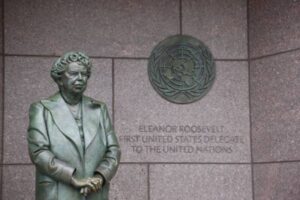
While FDR was in office, Roosevelt dramatically changed the role of First Lady, advocating for human rights, women’s rights and children’s causes. She was also an incredible champion of the burgeoning civil rights movement — a topic she addressed often in regularly scheduled meetings with the press. She also discussed these issues and more in a daily newspaper column she penned, as well as monthly magazine columns and a weekly radio show she hosted.
When her husband’s presidency ended in 1945, Roosevelt’s work continued. She went on to become chair of the U.N.’s Human Rights Commission and served as United States Delegate to the United Nations General Assembly from 1945 to 1952.
In her own words: “”A woman is like a tea bag. You never know how strong it is until it’s in hot water.”
1880-1973
A staunch women’s rights advocate and anti-war activist, Rankin was elected to the U.S. House of Representatives as a Republican from Montana in 1916, and again in 1940. She was remarkably the first woman ever to hold federal office in the United States.
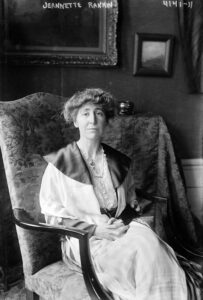
The daughter of a rancher and a schoolteacher, Rankin got her start as a D.C. lobbyist and social worker. In 1914, she ran for a seat on the U.S. House of Representatives and won. Her victory was not only historic on its own but also because of its timing: women didn’t have a nationwide right to vote until six years later, in 1920. (Rankin’s home state of Montana had become the seventh state to grant women unrestricted voting rights in November of 1914.)
Once in office, Rankin advocated tirelessly for the rights of laborers and women. She was also an outspoken pacifist and disagreed with the U.S. entrance into World War I. As fate would have it, when she returned to the House in 1940, she was faced with another rising conflict and again voted against war, casting the only Congressional vote opposing a declaration of war against Japan after its attack on Pearl Harbor. Her passion for pacifism continued and when she left office, she helped to create the “Jeannette Rankin Brigade,” a group of more than 5,000 feminists and activists opposed to the Vietnam War.
In her own words: “I may be the first woman member of Congress, but I won’t be the last.”
Mary McLeod Bethune
1875 – 1955
At the age of five, Mary McLeod Bethune had already endured more than many people four times her age. The child of former slaves, she was born in Mayesville, South Carolina and spent much of her childhood working in the fields. But the bright young girl dreamed of more — she wanted an education. The fifteenth of seventeen children, Bethune was the only member of her family to ever attend school (a one-room Black schoolhouse called Trinity Mission School), walking more than 5 miles each day to get there.
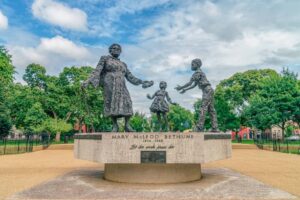
When she returned home, she would teach the rest of her family the things she had learned each day. Through hard work and the incredible support of her friends and the community, Bethune was able to complete her studies and was even accepted to college. Upon graduation, she returned to her town and began working as an elementary school teacher. More teaching positions followed and before she knew it, Bethune was president of a school she had started.
But that was just the beginning of her many successes. As she got older, Bethune also became increasingly interested not just in education but also civil rights. In 1935, she founded the National Council of Negro Women. She followed her time in that position by becoming president of the National Association for Colored Women and the National Youth Administration’s Negro Division.
In 1938, Bethune was appointed as a national adviser to President Franklin D. Roosevelt, helping him to create the Federal Council on Colored Affairs (a group also sometimes referred to as the Black Cabinet). Known in her time as the “First Lady of Negro America” — a title given to her by Ebony magazine — as well as “The First Lady of The Struggle,” she wrote prolifically and has been credited with helping to integrate countless groups and giving rise to the then-burgeoning civil rights movement through her thoughts and ideas, her undying optimism, and by the countless hours she put into spreading and promoting the message of equality she believed so adamantly in.
In her own words: “If we have the courage and tenacity of our forebears, who stood firmly like a rock against the lash of slavery, we shall find a way to do for our day what they did for theirs.”
1940 – present
“Little Patsy” as she was affectionately known during her time in Congress was the first female U.S. Representative to win an election in the great state of Colorado. To this day, she also remains the third-youngest woman ever elected to the House in its history, at the age of just 32.
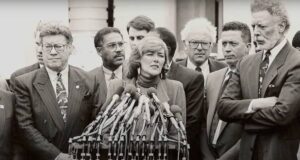
During her career, Schroeder was elected to the House a remarkable 12 times. She served on the House Armed Services Committee — the first woman ever to do so — and was a vocal champion of many progressive issues, especially those pertaining to women and families. She was a key vote in passage of both the Family and Medical Leave Act as well as the National Institutes of Health Revitalization Act. She was also one of the first members of Congress ever to serve on the Select Committee on Children, Youth, and Families when it was established in 1983.
In her own words: When asked by a male colleague how she balanced having a job with being a mother of two small children: “I have a brain and a uterus. I use both.”
Frances Perkins
1880-1965
Born in Boston to a family of booksellers and printers, Perkins grew up a member of the working class, toiling as both a social worker and a high school teacher.
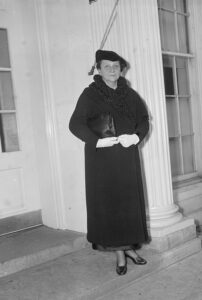
Looking for a new start, in 1910, Perkins moved to New York City. One year into her life in the Big Apple, she witnessed the 1911 Triangle Shirtwaist Factory fire — one of the worst industrial disasters in U.S. history where 146 workers were tragically killed. Outraged by what she saw and the conditions workers at the time had to endure, Perkins decided to devote the rest of her life to advocacy work and politics.
A staunch supporter and longtime friend of President Franklin D. Roosevelt, she served as FDR’s Secretary of Labor from 1933 to 1945 — the longest any official has ever served in that position. She also made history in that role as the first woman ever appointed to any presidential U.S. Cabinet. As Secretary of Labor, Perkins played a key part in helping to develop the New Deal — the series of programs and projects created to help America emerge from the Great Depression.
However, of all the projects she worked on during her time in D.C., Perkins was most proud of her role in helping to create the Social Security program in 1935. Everything she did in politics, she told a reporter late in her career, was inspired because of that tragic fire and her belief in helping to improve the lives of America’s working class.
In her own words: “A government should aim to give all the people under its jurisdiction the best possible life.”


















